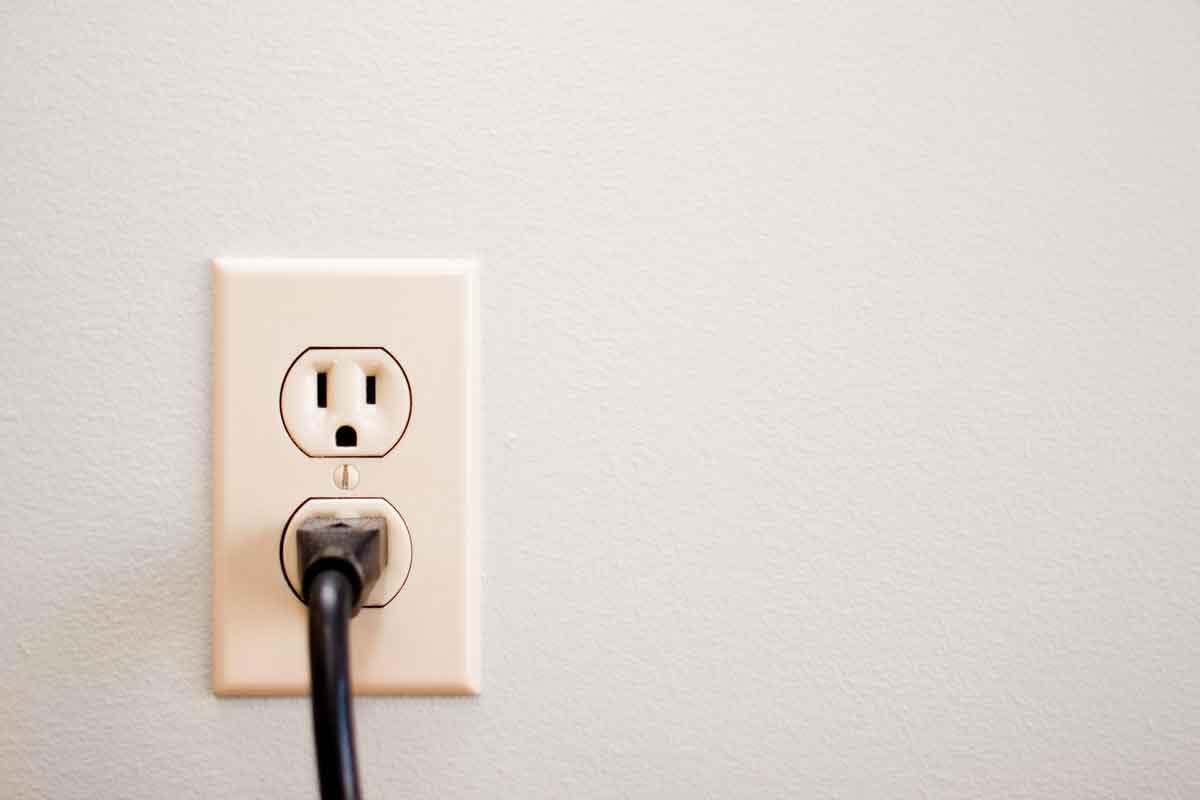One receptacle outlet slot is bigger than the other to keep you safe from a rogue wire in your hairdryer, vacuum or coffee maker.

Why Is One Receptacle Outlet Slot Bigger Than the Other?

Fiddling with an electrical plug and flipping it around until it easily slides into the correct slots in the outlet can be annoying. But those vertical prongs on a plug are there for good reason.
The larger and smaller slots in an outlet and the prongs on the plug are designed to keep you safe as you handle your hairdryer, food processor, vacuum, table lamps and other everyday plug-in electrical items.
On This Page
Why An Outlet Looks Like a Face
The outlet’s two vertical slots above a round hole may look like a surprise emoji, but the configuration is a national standard for plugs to snugly and safely slide into the outlet.
In the U.S., a 120-volt outlet has two vertical slots and a round hole centered just below them. When facing the wall outlet with the round hole at the bottom, the right, or hot, slot is slightly smaller than the left, or neutral, slot. The small hole is for the equipment grounding prong on a three-prong plug.
If the plug only has two prongs, one larger and one smaller, then it is the polarized type. But it does not include a grounding prong, as is often the case for lamps or other smaller plug-in electrical items.
Why One Prong Is Bigger
Polarized nongrounding-type plugs have one prong, the neutral, that’s larger than the other to ensure that the hot wire, which is the smaller one, is tapped correctly. Electricity streams in a circuit, which is a closed path of components where electrons flow from a current source.
To keep things simple, an outlet’s power flows from hot to neutral. When the plug is slid into the outlet, it completes the circuit from the hot slot to the neutral slot so that electricity safely flows from the home’s electrical system to the plugged-in appliance. This quickly delivers a stream of electricity that starts up the motor, filament, coil or other element in the process.
Two-Prong Outlets Vs. Three Prong Outlets
The main difference between two-prong and three-prong receptacle outlets is the grounding wire. The grounding prong on a receptacle outlet serves two important purposes.
For any appliance or piece of equipment enclosed in metal, such as a refrigerator or washing machine, the metal case or frame is connected to an equipment grounding wire in the power cord.
That equipment grounding wire is connected to the grounding prong at the receptacle outlet, which is connected to an equipment grounding wire in the branch circuit wiring back to the main electrical panel. There, the equipment grounding wire is connected to the home’s grounding system and Earth. This ensures that under normal operating conditions, the appliance is “grounded” and should not pose a hazard for electrical shock.
However, if a hot wire inside the appliance breaks loose and contacts the metal frame or case, a dangerous ground-fault condition and shock hazard will be present. The equipment grounding wire will then carry the excessive ground-fault current back to the main electrical panel and blow the fuse or trip the circuit breaker, turning off the flow of electricity.
This all happens in the blink of an eye, and hopefully prevents anyone from receiving an electrical shock.
Two-prong outlets
Two-prong outlets were standard in homes built before the 1960s. While they are not the grounding type, they are safe to use as long as they are working properly, according to the National Electrical Code. Test the two-prong outlet with a circuit tester to ensure it is safe to use for your small household appliances and other everyday items.
A three-pronged attachment plug cannot be used with a two-prong receptacle outlet. Be sure to never break the grounding prong off a three-prong attachment plug. This can create a serious shock hazard.
A two-prong outlet can create a higher risk for:
- Electrical fire;
- Electric shock;
- Damage to the electronic item.
However, a nongrounding-type two-prong receptacle outlet in and of itself is not a hazard if it’s wired correctly and in good working condition.
Most hazards come about when someone tries to use a two-prong outlet incorrectly. They’re fine for cell phone chargers, table lamps and other two-prong attachment plugs, but they cannot be used for anything with a three-wire attachment plug. There are many electrical “adapters” available, but their misuse can create serious shock hazards.
Three-prong outlets
The three-prong receptacle outlet has a grounding wire that helps prevent dangerous electrical shocks or fires. If the coffee pot had a hot wire loose in its metal-encased body, the metal case would become energized. Touching the energized coffee pot could create a potential deadly shock hazard to whomever reaches for it.




















